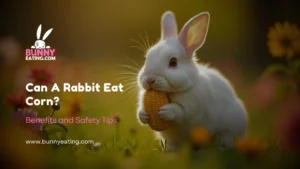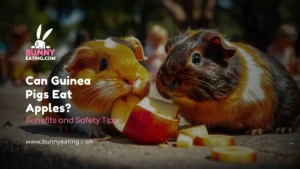If you are asking the question to yourself if wheatgrass is okay for your rabbit/hrs. This article takes a look at the advantages of feeding wheat grass to bunnies, what could potentially go wrong if the process is not done properly, and the most effective ways of going about this. Find out how to safely acclimatise this tasty green stuff and how to include it in Rabbit’s diet. Read on to make sure your feline companion can dine on wheatgrass with no ill health effects.
Safe Alternative to Wheat Grass for Rabbits
So, we can offer rabbit fresh herbs instead of wheat grass, such herbs include parsley, cilantro, and basil. These herbs are safe and healthy contributing to several nutrients that can be essential to your bunny. They also do not tax the rabbit’s digestive system as much as wheatgrass which some rabbits might not be able to properly digest.
Risks of Feeding Wheat Grass to Rabbits
The drawback of feeding rabbits with wheatgrass is that it causes digestive problems when it is taken in large quantities. One of the problems that may occur while changing the diet is that rabbits have sensitive stomachs, and if they are fed new types of food or given too much of them, they may suffer from upset stomachs or bloating. It is also important to acclimatize any new food in a pet’s diet by feeding only a small portion at first. Can Rabbits Eat Wheat Grass?
Effects of Wheat Grass on Rabbits
Wheatgrass can have both positive and negative effects on rabbits. On the positive side, it’s rich in nutrients and can offer a crunchy treat that some rabbits enjoy. However, too much wheatgrass can lead to digestive upset or discomfort. It’s essential to monitor how your rabbit reacts to it and adjust their diet accordingly.
Are Wheat Grass Good for Rabbits?
Wheatgrass can be good for rabbits in moderation. It provides some beneficial nutrients, but it’s not essential to their diet. A well-balanced diet for a rabbit primarily consists of hay, fresh vegetables, and a limited amount of fruits. Wheatgrass can be an occasional treat rather than a staple food.
Nutritional Value of Wheat Grass for Rabbits
Wheatgrass is high in vitamins A, C, and E, as well as minerals like calcium and magnesium. These nutrients are beneficial for a rabbit’s overall health. However, the high fibre content might not always be suitable for all rabbits, so it’s important to offer it as part of a varied diet.
How is Wheat Grass Made?
Wheatgrass is the young, green shoots of wheat plants. It’s typically grown from wheat seeds and harvested when the grass is about 6-8 inches tall. The grass is then cleaned and can be used fresh or dried. It’s often found in health food stores or can be grown at home.
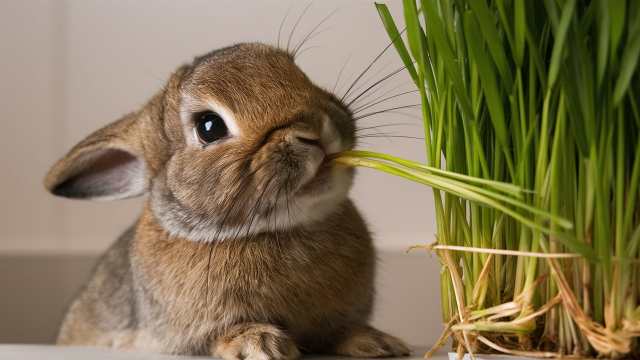
What Types of Wheat Grass Are Safe for Rabbits?
While the more standard wheat grass that is possibly available at a pet store or a health food store is safe for rabbits. However, make sure, it is pesticide and chemical-free, as these types of products are normally sprayed on the fruits. Fresh wheat grass preferably growing at home without the use of chemicals is the best for your rabbit.
Do Wild Rabbits Eat Wheat Grass?
Wild rabbits often eat a variety of grasses and plants, and wheatgrass can be part of their diet in the wild. However, they typically consume a wide range of plants, and their diet is more varied than what is commonly provided to domestic rabbits.
Why is Eating Wheat Grass Harmful to Rabbits?
Eating too much wheatgrass can be harmful to rabbits because it can upset their stomachs or lead to digestive issues. Wheatgrass is high in certain nutrients that, in excessive amounts, can be hard for rabbits to process. It’s crucial to feed it in moderation.
Store-bought Wheat Grass and Rabbits
Store-bought wheatgrass can be a convenient option for rabbits, but it’s important to choose a reputable source to ensure it’s free from harmful chemicals or pesticides. Check the label for any additives and prefer organic options if available.
Fresh Food Leads to Stomach Overload and Digestive Issues?
Introducing too much fresh food at once can overwhelm a rabbit’s digestive system, leading to problems such as bloating or upset stomach. It’s best to introduce new foods slowly and in small quantities, mixing them with their regular diet to help their system adjust.
Diet Should be Made Up of 70% Hay, and 30% Fresh Food.
A rabbit’s diet should primarily consist of hay, which provides essential fibre for their digestive health. Fresh vegetables and a small amount of fruits can make up the remaining portion of their diet. This balance helps keep your rabbit healthy and prevents digestive issues.
 Foods That Can Be Offered Without Restriction
Foods That Can Be Offered Without Restriction
Foods that rabbits can eat without restriction include fresh hay, such as timothy hay, and fresh, safe vegetables like leafy greens. These foods support their digestive health and provide the necessary nutrients without overloading their system.
How Often Can My Rabbit Eat Wheat Grass?
Wheatgrass should be offered to your rabbit occasionally rather than daily. It can be a treat or supplement to their regular diet but should not replace essential foods like hay and fresh vegetables. Offering it once or twice a week is a good guideline.
Feeding Rabbits Fresh and Dried Fruits
Fresh fruits can be given to rabbits in small amounts as an occasional treat, but dried fruits should be avoided or given very rarely. Dried fruits often contain concentrated sugars that can be too much for rabbits and may lead to health issues.
Can I Give My Rabbit Dried Fruit? No, or Very Seldom
Dried fruits are generally not recommended for rabbits due to their high sugar content. Rabbits have delicate digestive systems, and the concentrated sugars in dried fruit can lead to health problems like obesity or digestive upset. Stick to fresh fruits and offer them in moderation.
How Many Types of Wheat Grass Are There?
Different classifications of wheatgrass include the hard and soft varieties of wheat. The most common type which is taken by the rabbits is the standard wheat grass which is mainly grown on its nutrient value. However, each type has certain differences in composition, while the overall impact on the nutritional profile is quite comparable.
Observing Your Rabbit After Eating Wheat Grass
After introducing wheatgrass to your rabbit’s diet, observe them for any signs of digestive upset, such as changes in their stool or behaviour. If you notice any adverse effects, reduce the amount given or discontinue it and consult your vet if necessary.
What About Wheat Grass Seeds and Leaves?
Wheat grass seeds are generally not recommended for rabbits due to their hard texture and potential to cause digestive problems. The young grass shoots are preferred as they are softer and easier for rabbits to digest.
Tips for Serving Wheat Grass to Bunnies
When serving wheatgrass to your bunny, ensure it’s fresh and pesticide-free. Offer it in small amounts initially to see how your rabbit reacts. Gradually increase the amount if they tolerate it well, but always monitor for any signs of digestive issues.
How Does Wheat Grass Digestion in Rabbits?
Digestion of wheatgrass in rabbits entails the process by which the grass is acted upon in the digestive system of rabbits. While wheatgrass can give rabbits many health benefits, it can also prove difficult to digest due to rabbits ‘ delicate gastric tracts, which can cause digestive upsets such as bloating or discomfort. Occasionally, it is usually better because too much caffeine could lead to other problems like headaches and nervousness.
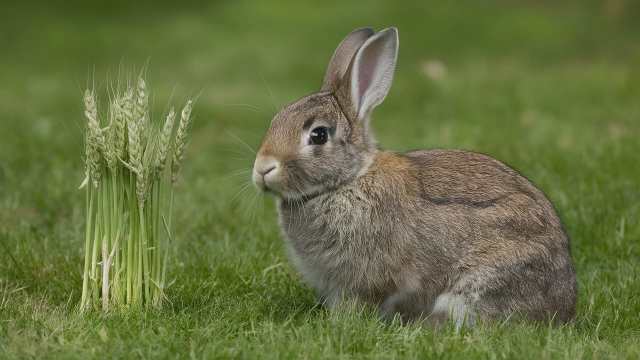
What Are the Nutritional Benefits of Eating Wheat Grass for Rabbits?
Wheatgrass provides vitamins A, C, and E, as well as minerals like calcium and magnesium, which can be beneficial for your rabbit’s health. However, balancing these nutrients with other parts of their diet is important to ensure overall health.
Do Rabbits Enjoy Wheat Grass Food?
Many rabbits enjoy the taste and texture of wheat grass, finding it a tasty and crunchy treat. However, individual preferences can vary, so it’s good to offer a variety of safe foods and see what your rabbit prefers.
What Parts of Wheat Grass Can Rabbits Eat?
Rabbits can eat the young, green shoots of wheatgrass. Avoid giving them the seeds or older, tougher parts of the plant, as these can be harder to digest and may cause digestive issues.
Can Rabbits Eat Wheat Grass Seeds?
Wheat grass seeds are generally not recommended for rabbits. They can be tough for rabbits to digest, potentially leading to gastrointestinal problems. Stick to the grass itself for a safer option.
Can Wheat Grass Be Toxic to Rabbits?
Wheatgrass is generally not toxic to rabbits when given in moderation. However, excessive amounts can cause digestive issues. Always introduce new foods gradually and monitor your rabbit’s health to ensure they’re tolerating it well.
Can Wheat Grass Cause Digestive Problems in Rabbits?
Yes, wheatgrass can cause digestive problems if fed in large amounts or if a rabbit is not accustomed to it. It’s important to introduce it slowly and watch for any signs of discomfort or digestive issues.
How Do You Introduce Your Bunny to Wheat Grass?
Introduce wheat grass gradually by offering a small amount alongside their regular diet. Observe how your rabbit reacts and increase the amount slowly if they seem to tolerate it well. This helps their digestive system adjust without causing upset.
Preparing Wheat Grass for Rabbits
Before offering wheatgrass to your rabbit, ensure it is fresh and clean. Rinse it thoroughly to remove any potential chemicals or dirt. Chop it into small pieces if necessary to make it easier for your rabbit to eat.
How Do Rabbits Eat Wheat Grass?
Rabbits usually nibble on wheat grass just like they would with other types of hay or greens. They use their front teeth to tear the grass and chew it. Providing it in a fresh, clean form will make it more appealing and easier for them to eat.
What Happens if Rabbits Eat Too Much Wheat Grass?
If a rabbit eats too much wheatgrass, it can lead to digestive upset, including bloating or discomfort. To prevent this, offer wheat grass in moderation and as part of a balanced diet.
What If My Rabbit Eats a Large Amount of Wheat Grass?
If your rabbit consumes a large amount of wheatgrass, monitor them closely for any signs of digestive issues. Ensure they have plenty of hay and fresh water to help with digestion. If problems persist, consult a vet for advice.
 How Much Wheat Grass Can My Rabbit Eat?
How Much Wheat Grass Can My Rabbit Eat?
Wheatgrass should be offered in small amounts, about a tablespoon or so, a few times a week. It should be a treat rather than a main food source, with the majority of their diet consisting of hay and fresh vegetables.
When Shouldn’t You Feed Wheat Grass to Your Rabbit?
Avoid feeding wheat grass if your rabbit has a history of digestive problems or if they shows signs of discomfort after eating it. Also, avoid giving it to very young rabbits or those with health conditions without consulting a vet first.
Can Baby Rabbits Eat Wheat Grass?
Baby rabbits have more sensitive digestive systems than adults and should be given a more restricted diet. It’s best to avoid wheatgrass for young rabbits until they are older and have a more developed digestive system.
How Frequently Should Adult and Baby Rabbits Be Fed Wheat Grass?
Adult rabbits can have wheat grass occasionally, about once or twice a week. Baby rabbits should not be given wheatgrass until they are at least 6 months old and their digestive system is more developed.
Potential Dangers in Wheat Grass
The main potential danger of wheatgrass is digestive upset if consumed in large quantities. Ensure that it is introduced gradually and in moderation to avoid any negative effects.
What If My Rabbit Accidentally Eats a Lot of Wheat Grass?
If your rabbit accidentally eats a large amount of wheatgrass, monitor them closely for any signs of digestive issues. Ensure they have plenty of water and hay. If any adverse effects occur, contact your vet for guidance.
Monitoring Your Rabbit’s Health with Wheat Grass
Regularly check your rabbit’s health and behaviour after introducing wheatgrass into their diet. Look for any signs of digestive upset, changes in stool, or discomfort. Keeping a close eye will help you ensure their diet remains balanced and healthy.
Incorporating Fresh Greens and Vegetables
Fresh greens and vegetables should be a part of your rabbit’s diet, offering variety and essential nutrients. Include safe options like leafy greens, carrots, and bell peppers, and always introduce new foods gradually.
What Actions Should I Take if My Rabbit Consumes Wheat Grass?
If your rabbit consumes wheat grass, ensure they are eating plenty of hay and drinking water to aid digestion. Monitor them for any signs of digestive issues, and consult your vet if you notice any unusual behaviour or health concerns.
Creating a Balanced Diet with Wheat Grass
Incorporate wheatgrass into a balanced diet by offering it alongside hay, fresh vegetables, and a small amount of fruit. This ensures your rabbit gets a variety of nutrients and helps maintain overall health.
My Rabbit Ate a Whole Wheat Grass
If your rabbit eats whole wheat grass, watch for any signs of discomfort or digestive issues. While occasional consumption of a larger amount may not be harmful, ensure their diet is well-balanced to support their health.
Can Rabbits Eat Wild Wheat Grass?
Rabbits can eat wild wheat grass, but make sure it’s from a safe, chemical-free area. Wild grasses can sometimes carry pesticides or contaminants, so it’s better to grow them yourself or purchase them from a reliable source.
 What Else Can I Feed My Rabbit Along with Wheat Grass?
What Else Can I Feed My Rabbit Along with Wheat Grass?
Along with wheat grass, feed your rabbit a variety of fresh vegetables, hay, and a small amount of fruit. This variety ensures they receive a balanced diet and all the necessary nutrients for their health.
How to Create a Rabbit-Friendly Garden
To create a rabbit-friendly garden, grow safe vegetables and herbs that rabbits enjoy, such as parsley, cilantro, and bell peppers. Avoid using pesticides or chemicals, and ensure the garden is secure to keep your bunny safe.
Wheat Grass Feeding Guidelines and Amounts
Feed wheat grass in small amounts, about a tablespoon or so, once or twice a week. It should be a supplement to their main diet of hay and fresh vegetables, not a replacement.
Rabbit Treats Made at Home with Wheat Grass
You can make homemade treats for your rabbit using wheatgrass. Simply dry the grass and mix it with other safe ingredients like dried herbs or small pieces of fruit. Ensure that any treats are given in moderation and as part of a balanced diet.
Conclusion
It is advisable to feed rabbits with wheat grass occasionally in small proportions. When you are familiar with the dangers of consuming this food and how to introduce it correctly, your bunny will be able to enjoy this delicacy without harm. It is always wise to monitor their health and include wheatgrass in their diets. These guidelines will help you provide your rabbit with a diverse diet for him to live a healthy and happy life.
FAQs
Is wheat grass safe for rabbits?
Yes, in moderation. Introduce it gradually and monitor for any digestive issues.
How often can I feed my rabbit wheatgrass?
Once or twice a week is sufficient.
Can baby rabbits eat wheatgrass?
It’s best to avoid wheatgrass for rabbits under 6 months old.
What are the nutritional benefits of wheatgrass for rabbits?
Wheatgrass is rich in vitamins A, C, and E, as well as calcium and magnesium.
Can wheatgrass cause digestive problems in rabbits?
Yes, if given in large amounts or introduced too quickly.
Can I feed my rabbit wild wheat grass?
Only if it’s from a chemical-free area.
What should I do if my rabbit eats too much wheatgrass?
Monitor for digestive issues and ensure they have plenty of hay and water. Consult a vet if needed.
Are wheat grass seeds safe for rabbits?
No, stick to the young, green shoots.

Admin – Pet Expert shares valuable tips on pet care, nutrition, and health, offering practical advice to help your furry friends thrive.
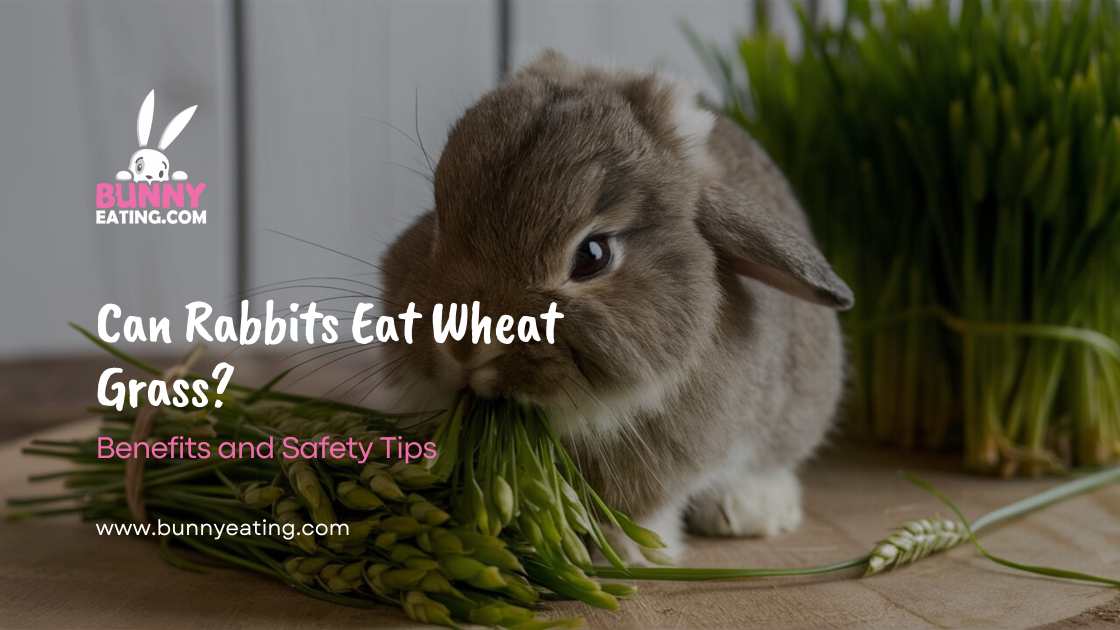
 Foods That Can Be Offered Without Restriction
Foods That Can Be Offered Without Restriction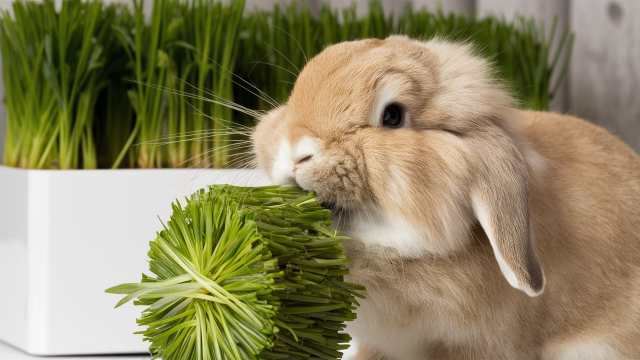 How Much Wheat Grass Can My Rabbit Eat?
How Much Wheat Grass Can My Rabbit Eat?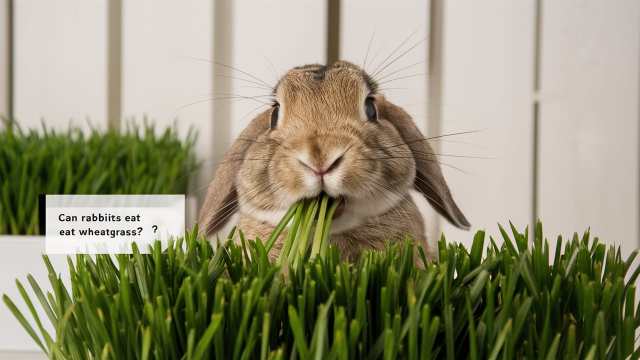 What Else Can I Feed My Rabbit Along with Wheat Grass?
What Else Can I Feed My Rabbit Along with Wheat Grass?